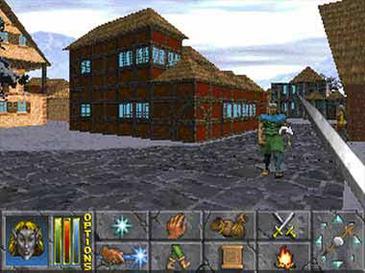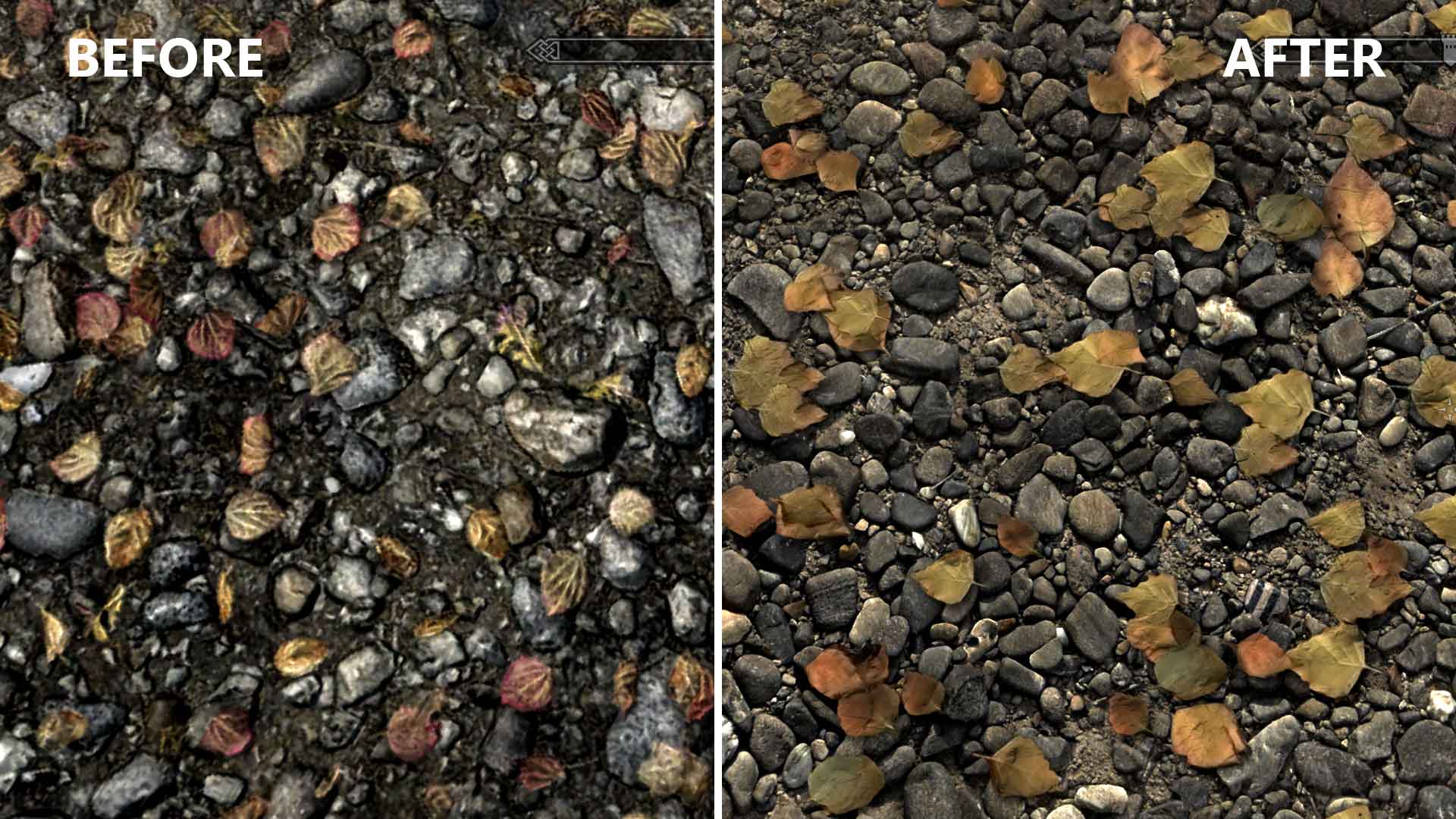Which eventually led me back to the modern classic, The Elder Scrolls 5: Skyrim.
A Brief History of The Elder Scrolls (TES).
Arena
In 1994, Bethesda, a company that worked primarily on sports games, released "The Elder Scrolls: Arena" for PC. There may have been other open world games (Betrayal at Krondor), but I think it's fair to say that open world games are much more common today than they were back than. Not to mention that PC gaming is somewhat more mainstream. I've gotten it working on a DOS emulator, and it definitely felt like the ancestor of the modern elder scrolls games, albeit a lot... older feeling.
Daggerfall
I don't know about the popularity of Arena, but I do know that TES 2: Daggerfall was at least talked about when it came out. Daggerfall is much harder to get working on modern systems, and while I did once get a version of this game running, it was sufficiently difficult to keep running that I didn't play the game much. But, it was at least popular among it's fan base... for what that's worth.
Morrowind
Now, TES 3: Morrowind was utterly popular. It is a legend among open world games, and many modders continue to try to recreate this game in the modern game engines of its successors. Open world RPGers often compare modern games to Morrowind. It is held on an untouchable pedestal by some, and at least considered a good game by most gamers. My confession: I only ever played this game for about 15 minutes.
Oblivion
TES 4: Oblivion was the first TES game that I played, and it blew my mind. At the time, truly open world gaming was not really very common. A few games mimicked TES, but Oblivion was definitely the first open world experience that grasped me. The game had a massive scale, which continues to be hard to compete with. The world was just enormous, detailed, and rich with subplots. Just look at this aerial view of the imperial capital (below). There are book stores, magic shops, general merchants, weapons and armor merchants, a thieves guild, a port and harbor, the castle, housing, a prison, a gladiatorial arena, military executive buildings, the armory, religious structures... and a lot of other places and people, with many personal vendettas, love stories, underground activities, or whatever other number of quests, personalities and stories you'll find. Now, think about how in the distance, beyond those mountains, you could find dozens of other cities.
I remember having to turn off the grass to be able to play the game, since the grass textures overloaded my computer. In fact, it wasn't until I got a better computer that I was able to play this game on anything with graphics settings above unbearably mimimalistic. Below is an image that illustrates just how minimalistic the game can look. Even those shrubs on the bottom left and right spruce it up a bit. But the game had a lot of detail, when settings were up high enough.
Now, for TES 5: Skyrim.
This game is an amazing successor to the TES series, but it was a very unstable video game. You'l be playing, and then out of the blue, it crashes. Not to mention, it takes like 10 minutes to start the game and load your last save, which makes a crash all that more frustrating. In fact, the terms CTD (crash to desktop) and microstutter (where the game renders somewhat like a slideshow for a second or two), while associated with poor graphics/game performance in general, are more commonly associated with this game than any other. What a disappointment!
And yet, the game is so immersive and vast, that a committed gamer may overlook these awful aspects to participate in the adventures of Skyrim. In fact, it is quite possibly the most highly modded game ever, with almost 40,000 files boasted at Nexus Mods, a major modding site. Mods include everything from improved graphical quality to diverse alterations of gameplay.
Graphics mods make the game look uber good.
This picture shows a close-up of a texture from the ground, demonstrating the quality improvements available.
This image demonstrates a mod that makes the meshes of various objects look much better... for example, chains are no longer flat, and apples aren't 12 sided objects.
And this picture is just to demonstrate how very beautiful the game can look.
And gameplay mods add really exciting features and interesting challenges, as well as improving various aspects of the game, such as the level system and enemy AI. Some mods I've really enjoyed are:
Frostfall - creates an "exposure" system, where you need to keep your character warm while in cold weather by wearing warm clothing, building a fire, and/or seek shelter in storms.
iNeed - creates a hunger, thirst, and fatigue system that requires meeting your characters needs in order to function at peak performance.
Hunterborn - Takes away the original system where animals have coins and weird things, and replaces it with a field dressing, skinning, and carving/harvesting system.
So... the problem with all this is that the game isn't stable, as I said before. The more mods installed, the less stable the game becomes. But as one begins modding Skyrim, it becomes difficult to decide where to stop modding. For many modders, it seriously gets to the point where they are trying to get the game to start at all.
There is plenty of software designed to aid modders in setting up mods in the most functional possible way. Nexus Mod Manager, Mod Organizer, BOSS, Load Order Optimization Tool, Skyrim Performance Monitor, TES5Edit, Wrye Bash, and many, many others. I've used all of the above, and many others.
To make a long story short... at this point... I've gotten the game to the point that it starts with about 300 mods installed. The experience is awesome... but it microstutters and crashes to a frustrating extent. I guess it doesn't matter too much, since I've not been in the mood to play games anyhow. But it is simultaneously very exciting and frustrating!
.png)








